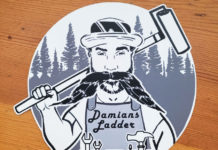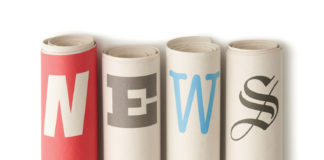As the popularity of wine has increased over the past decade, grocery stores both large and small have responded by providing more extensive wine sections. The wine section is no longer twenty choices on one rack; most grocery stores now have an entire aisle of the store dedicated to wine, while even Safeway has a higher-end wine section.
What does this mean for your average customer? Unfortunately, it means confusion.
The most common question I get asked is, “How do I choose a good wine when I’m food shopping? There are too many choices.”
My first and most important suggestion is to pay attention to the wine label. A label will tell you a lot, even when it’s not trying to.
Just about every bottle of wine out there has a short description of the wine on the back. Ignore this. The description is simply a marketing pitch designed to make your taste buds water.
Each bottle will have a region listed on it, and some are more vague then others. If a bottle just says “California” on it and gives no other indication, then it is telling you that the grapes could have come from just about anywhere. You have no idea if they came from a cooler region or a warmer region. One thing you do know is that it is mass-produced. If the producers don’t even bother to note a region, then how much time and care do you think they put into the wine making?
Some bottles are the opposite and will get so specific as to tell you exactly what vineyard produced the grapes. For example, a bottle of Soquel Vineyards Pinot Noir might say “Muns Vineyard” on it. A bottle that is this specific tells you two things: The first is that the winemaker obviously thinks this vineyard is producing hot stuff, and the second is that this is a small-production wine and probably well taken care of.
Most bottles will at least give you a specific region, like Paso Robles or Santa Cruz Mountains or Sonoma County. This will at least tell you if it was a warm- or cold-weather region.
Another telling factor, of course, is price. Most wines under the $10 price point are going to be mass-produced and quite poor. That doesn’t mean you shouldn’t drink them; it just means you shouldn’t take them to a dinner party. Taking a bottle of Yellow Tail to a dinner party is like taking a 40-ounce can of Mickey’s to a barbecue.
I visited a friend’s house recently, and they had a big wine rack with nothing but Charles Shaw on it. When I teased my friend about it, he said, “Hey, man, there are a lot of Wednesday nights!” This, to me, made sense.
Most wines over the $40 price point are going to be well-made wines (one would hope). It’s the $15 to $30 price range that is tough, because this is the range most people shop in, and it is a range that contains great wine and glorified vinegar. I love to shop in this price range, because the misses are easily forgotten and the golden nuggets you find are often remembered.
One of the best things about wine is experimentation. Remember to look for wines that designate a vineyard and stay away from wines that are on sale. Good luck!
Austin Twohig is a certified sommelier and partner in The Santa Cruz Experience, which conducts winery tours in the Santa Cruz Mountains. Email him at au****@********************ce.com.












